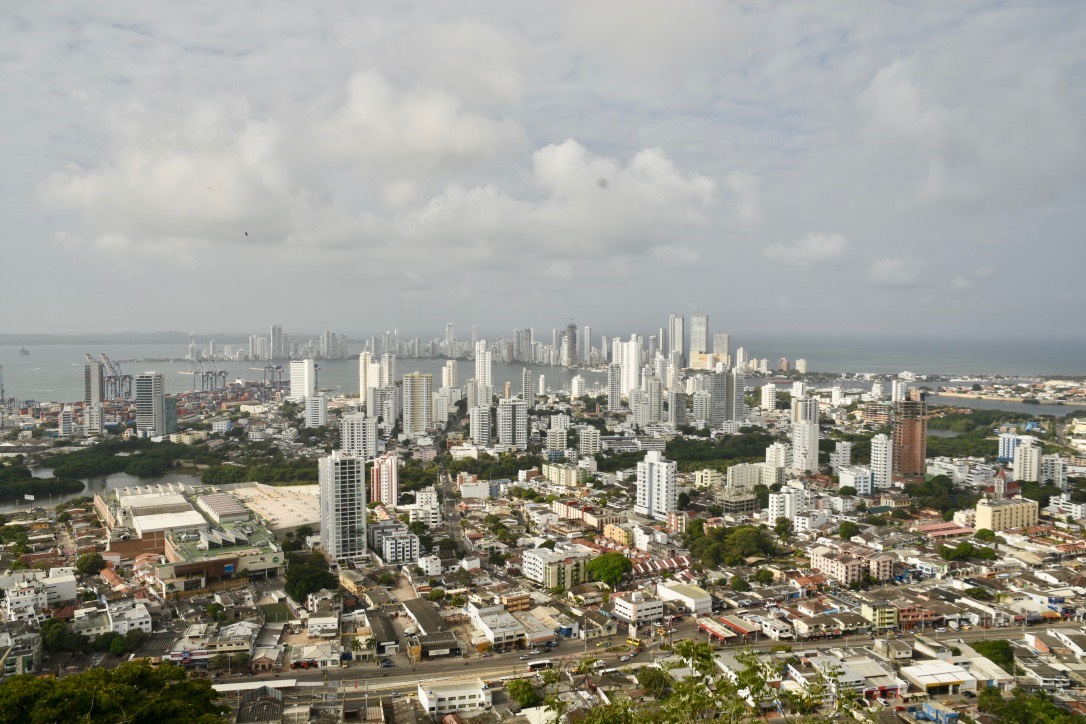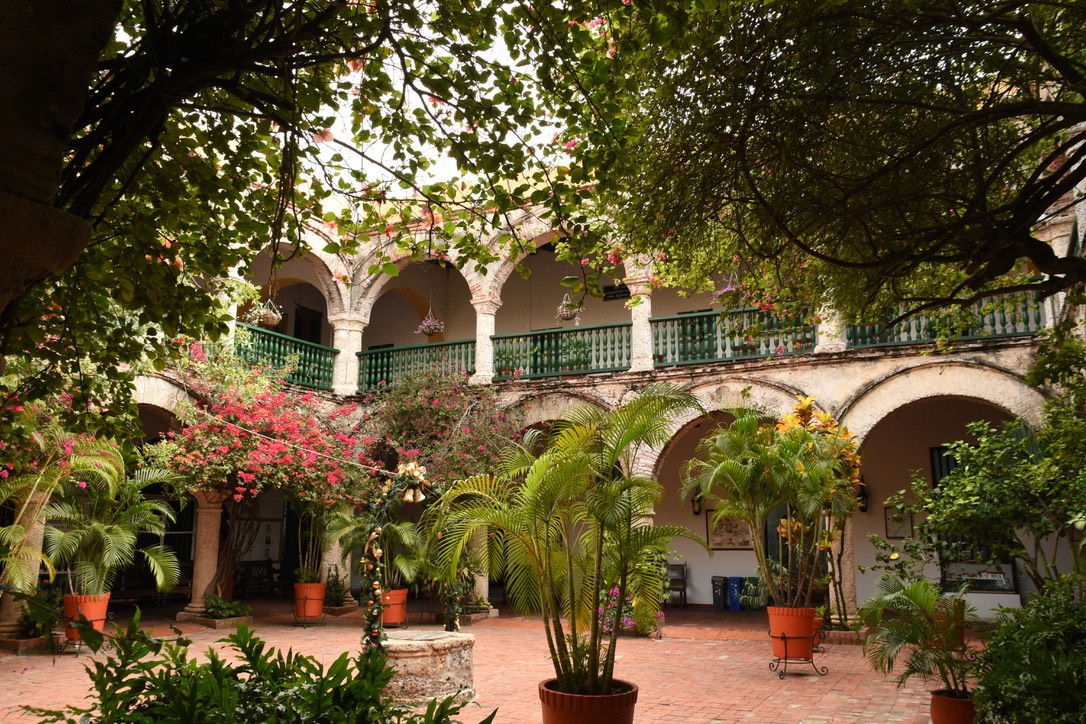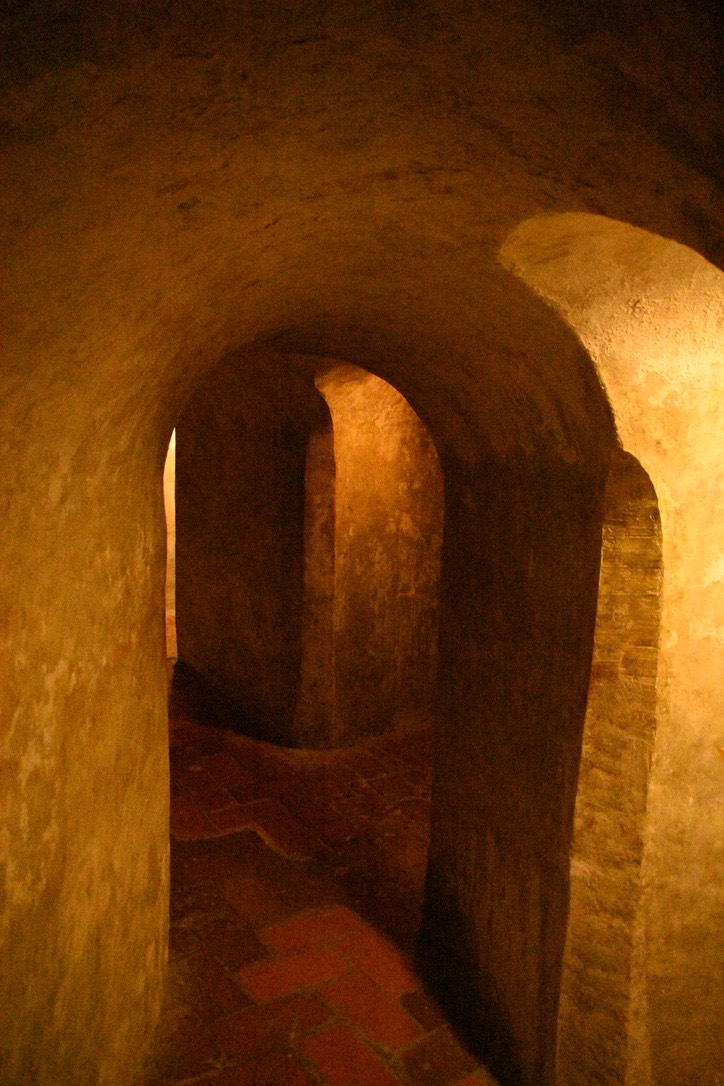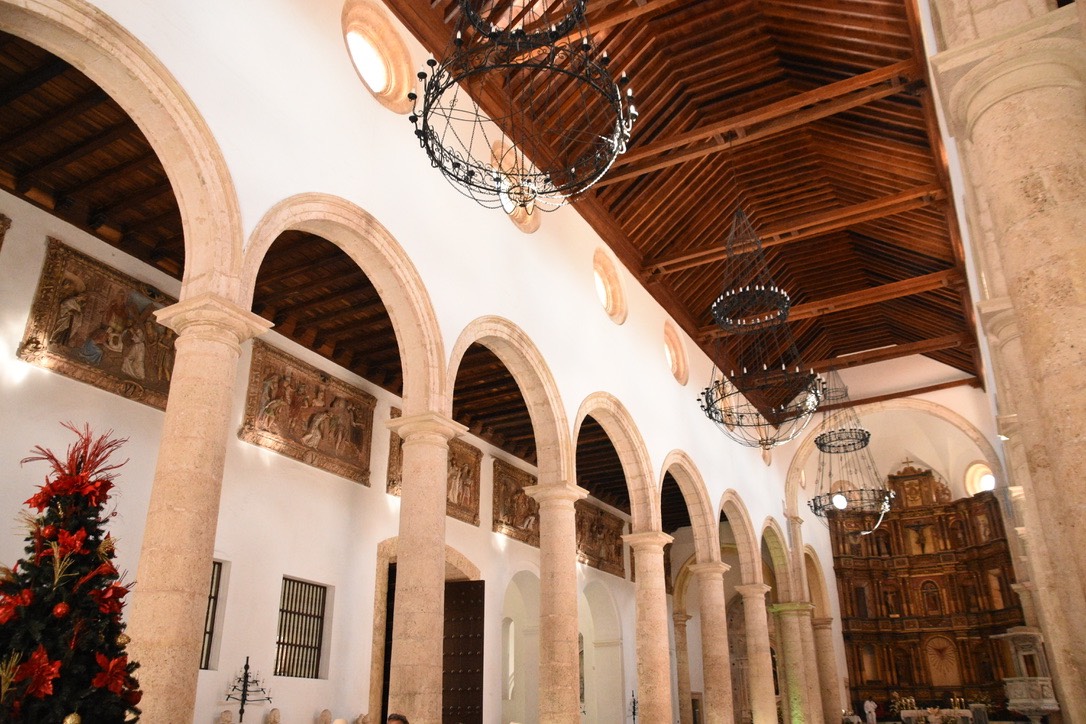Today, early in the morning, our ship docked at the port city of Cartagena, located on Colombia’s Caribbean coast at the very northern tip of the South American continent.

We met our tour guide, Marta, and our driver, Luis, at the end of the pier at the passenger ship terminal. Our first stop was the city’s highest point, a 16th-century Spanish monastery perched atop a mountain.

Once home to Spanish Franciscan and Jesuit monks, the monastery is largely a tourist attraction today, although the facility is still used by three practicing Catholic priests.
From the top of the hill, one can get a birds-eye view of Cartagena’s many neighborhoods. Visible in this picture are Cartagena’s central avenue, dotted with orange buses that provide free transportation to all of the city’s districts, the busy commercial port, the modern skyscrapers on the island of Manga (Mangoes, so named for the mango trees that grow there), and on the far right, the domes of the old walled city.
On the other side of the hill sprawl the city’s working-class neighborhoods. Many of the people living here are making the minimum salary of $3,600 USD per year, and an increasing number are refugees fleeing the economic conditions in neighboring Venezuela. Also visible here are the runways of Cartagena Airport and the pointed red roof of a modern school, donated to the city by the singer Shakira.
Our next stop was a massive stone fortress built by the Spanish to defend the city from invasion by a foreign power or by pirates. The sloped walls, constructed of limestone, coral and brick, are designed to deflect cannonballs.
The fortress is crisscrossed by a network of stone tunnels, designed to allow the Spanish soldiers to move around the fort without being visible by the enemy. Here, an entrance to one of these tunnels:
What the tunnels look like on the inside:

Our final stop took us to the Old City of Cartagena, which is comprised of beautifully restored colonial-era buildings and surrounded by a stone wall. Here are some pictures taken from the streets of the Old City:
Most of the buildings in the Old City are these two-story homes, which feature balconies and beautiful inside courtyards. Centuries ago, these houses belonged to middle-class Spaniards, but now, many have been converted into hotels, Airbnbs, or shops.
Here, the flag of the city of Cartagena flies from a colonial-era home along Calle de Don Sancho.
This is a Spanish cathedral called la Catedral de Santa Catalina de Alejandria, featuring beautiful columns and a peaked tower visible from all over the city.

More pictures from the Old City:
Cartagena is one of my favorite places that I’ve ever visited, and I am sure that I will return to the South American continent someday. The city is vibrant, dynamic, and unlike anywhere else I’ve been. Fifty-story luxury skyscraper hotels coexist with 16th-century cathedrals and illegal settlements clinging to the side of sheer cliffs. The streets are populated by tiny yellow taxis, delivery trucks, and old 4x4s, with countless motorcycles weaving in and out of it all. At red lights, local residents wash the windshields of the stopped cars for a small fee and sell snacks and cold water. It is a city just as modern and bustling as it is historic, and I hope to see more of what South America and Colombia have to offer.
Next stop: traversing the Panama Canal.